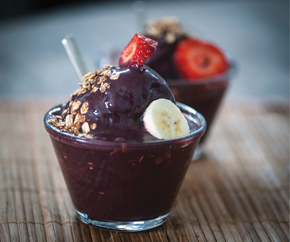
Léo RamosAçaí: good antioxidant, not-so-great antibacterialLéo Ramos
Açaí, acerola cherry, hog plum, guava, soursop, mango, pineapple, tamarind. Brazil has fruit to suit all tastes, but flavor is no longer their only important attribute. Today, the functional properties of food are also highly valued. During his doctoral studies at the Federal University of Ceará – with a stint at the Polytechnic Institute of Porto, in Portugal –, Mário Paz tested the antioxidant and antibacterial activity of pulp from the eight types of fruit mentioned above (Food Chemistry, April 2015). Acerola cherries and açaí were the winners when it came to antioxidant properties, which may be important in protecting against cardiovascular diseases, certain kinds of cancer, and other afflictions. In this category, pineapple and tamarind came in last. The ranking turned upside-down when Paz analyzed antibacterial activity, which can extend a food’s durability: tamarind performed well against every bacterium tested, including Salmonella and Escherichia coli, important agents of food contamination. Açaí, on the other hand, had only a minimal effect on microorganisms. This doesn’t mean that anyone should use a fruit bowl as a medicine cabinet, but the study suggests that tamarinds should be studied in greater depth for inclusion into the composition of certain medications to fight human or veterinary diseases.
Republish